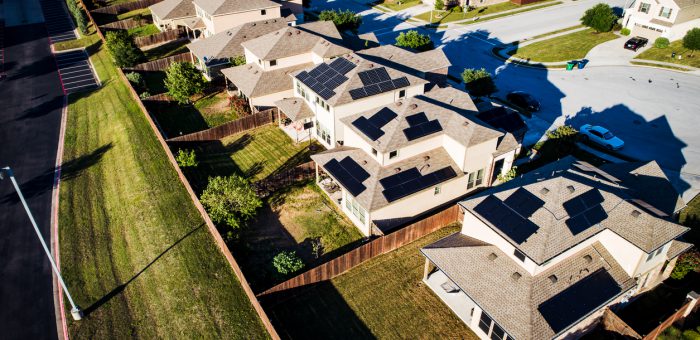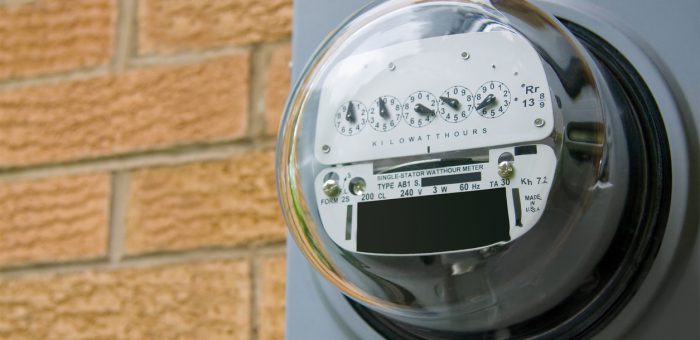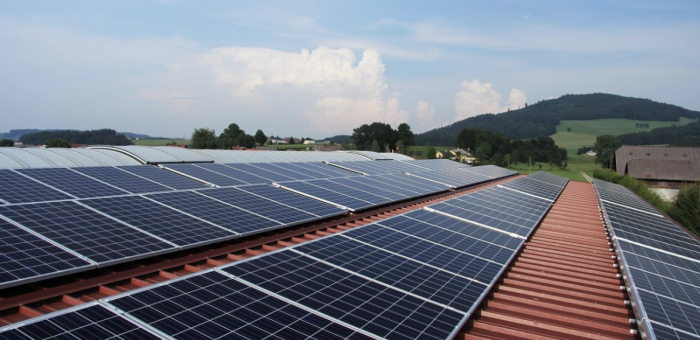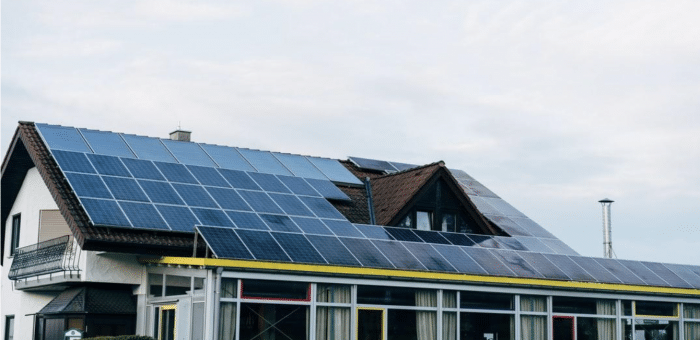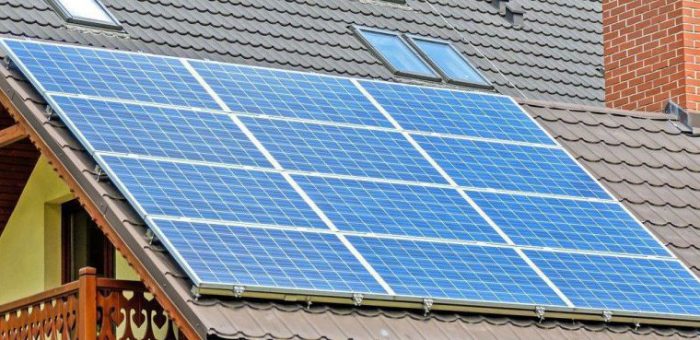What are solar batteries?
Solar power systems produce electricity by harvesting the sun shining on solar panel arrays installed on rooftops. Photovoltaic cells in the solar panels absorb the sun’s rays. Photons hitting the array of solar panels produces an electric field.
This electric field then flows to a house’s inverter, where it is converted from DC power to AC power, which can power anything in the home, such as appliances, lights, and electrical outlets. Solar panel batteries store excess energy for later use.
Battery backup power can provide electricity for the house at night and on days when the sun isn’t brightly shining on the solar cells. Homes with solar panel systems and rechargeable batteries will also have power when the power grid goes down.
The different deep cycle battery types for solar energy
There are several different types of solar batteries: lithium-ion batteries, lead-acid batteries, sealed batteries, and solar battery banks, each with different uses.
1. Lithium-ion batteries
Lithium-ion batteries are probably the most popular solar battery. They have cells with lithium ions that move from negative to positive. Many consumer electronics use lithium batteries for power — such as laptop computers, smartphones, cameras, and tablets — so consumers are used to working with devices that have them.
The advantages of these batteries are efficiency, longer lifespan, less maintenance, and a higher depth of discharge. They cost more than other options but can last up to four times longer than lead-acid batteries.
Battery technology has advanced enough that a lithium battery can have up to 1,200-megawatt hours. A megawatt is one million watts. Of course, a residential system won’t have that much battery capacity, nor would it ever need that much. For instance, a Tesla Powerwall, a rechargeable lithium-ion battery system, has a usable energy amount of 13.5-kilowatt hours.
2. Lead-acid batteries
Lead-acid batteries are the same batteries used in cars and other vehicles. They use a chemical reaction between water, lead, and sulfuric acid to generate stored energy. Lead acid batteries have been used for over 160 years because they are reliable and cheap. Solar panels can use these batteries.
One drawback is potential sulfation, a coating on the lead plates when the battery discharges too many times. Lead sulfate that isn’t broken down combines with hydrogen and makes a permanent coating. Prevent this by discharging no more than half of the battery’s capacity at any given time. One of the benefits of lead-acid batteries over lithium-ion batteries is greater tolerance for temperature changes.
3. Sealed batteries
Sealed lead-acid batteries are also called SLAs or valve-regulated lead-acid batteries. These batteries are different from flooded lead-acid batteries. They are spill-proof, can charge up to four times faster than other lead-acid batteries, can store up to 10-15% more energy, and can be used as solar rechargeable batteries. These batteries require more regular maintenance and have a shorter lifespan, but they are more inexpensive than many other battery options.
The two types of sealed lead-acid batteries are absorbent glass mat (AGM) and gel batteries. They are more expensive than flooded lead-acid batteries but have a longer lifespan. Gel batteries can’t handle as much current as absorbent glass mat batteries but usually have a longer lifespan and you can mount them in any orientation.
4. Solar battery banks
Solar battery banks are batteries that will store energy. A bank is a group of batteries that are wired together. When wired together in series, they can produce 12, 24, or 48 volts. The purpose of the bank is to store the electricity rather than send it back into the power grid.
When the system is not generating energy from the sun, such as on cloudy days or at night, you can use the energy stored in the battery banks. You can wire batteries together to produce up to 100 amps of current.
Excess power generated from the solar panel system charges the battery banks. One can use these banks when it’s dark or cloudy outside or when the public power grid has a power outage.
Can you use different types of batteries and battery sizes together?
Different types of battery sizes should not be mixed and matched when building a battery bank. Batteries of different types and amp-hours require different sets of maintenance instructions. Charging and voltage problems may occur because of varying cell counts and management systems.
Batteries connected this way can result in battery failure and voided warranties. To properly connect batteries in series to form a battery bank, use batteries of the same size and do not connect batteries of different types.
Why you should consider investing in a solar battery system
Solar panel systems are a clean energy alternative to the local power grid. With regular maintenance, a typical lifespan for your system is more than 25 years. The average cost of a solar power system and installation is $3 to $5 per watt or $15,000 to $25,000 before tax credits and incentives.
For residential solar power systems, there is a one-time federal investment tax credit called a Residential Renewable Energy credit based on a percentage of the total cost of the completed installation, which you can claim on your income taxes. The credit is 26% for systems installed from 2020 to 2022 and 22% for systems installed in 2023.
The average cost for a system with battery storage is about $25,000 to $35,000. Since the federal tax credit includes the total system installation, installing a system with battery capacity can help reduce the total cost.
With rebates, rewards, and tax credits, along with the savings that come from generating your own electricity, you can recoup the costs of the system and save money in the long run, making solar power a smart investment.
Save money on a complete solar power plan
Solar power batteries can store the excess power generated by your solar power system. This extra energy can then be fed back into the local power grid and sold to the power company or stored for later usage in the home, such as fulfilling nighttime power needs or using electricity on overcast or rainy days. Using solar power with a solar panel battery system can lead to significant savings for homeowners.
For Texans specifically, another way to save money on a complete solar power plan is by using Power Wizard to search for a plan specific to solar panel owners, allowing customers to receive credits when they produce more energy than they use. Power Wizard’s DIY tool will check hundreds of electricity plans using proprietary data in seconds to find the best plan for you.
One other way to save money on a complete solar power plan is by using Power Wizard to search for affordable rates. Power Wizard’s DIY tool will check hundreds of electricity plans using proprietary data in seconds to find the best plan for you.
After checking plan costs, you can sign up for a Gold VIP service offering to unlock the best plans and additional perks, including a way to automatically renew your contract with a plan when your current plan expires.
Power Wizard can help match you with the right provider and plans for you, potentially saving hundreds of dollars. We saved customers an average of $748 in 2021. That kind of annual savings is too great to pass up, so sign up today.
Check out Power Wizard to see how we can help you save hundreds of dollars annually, whether it be a solar panel installation or a new electricity plan.
